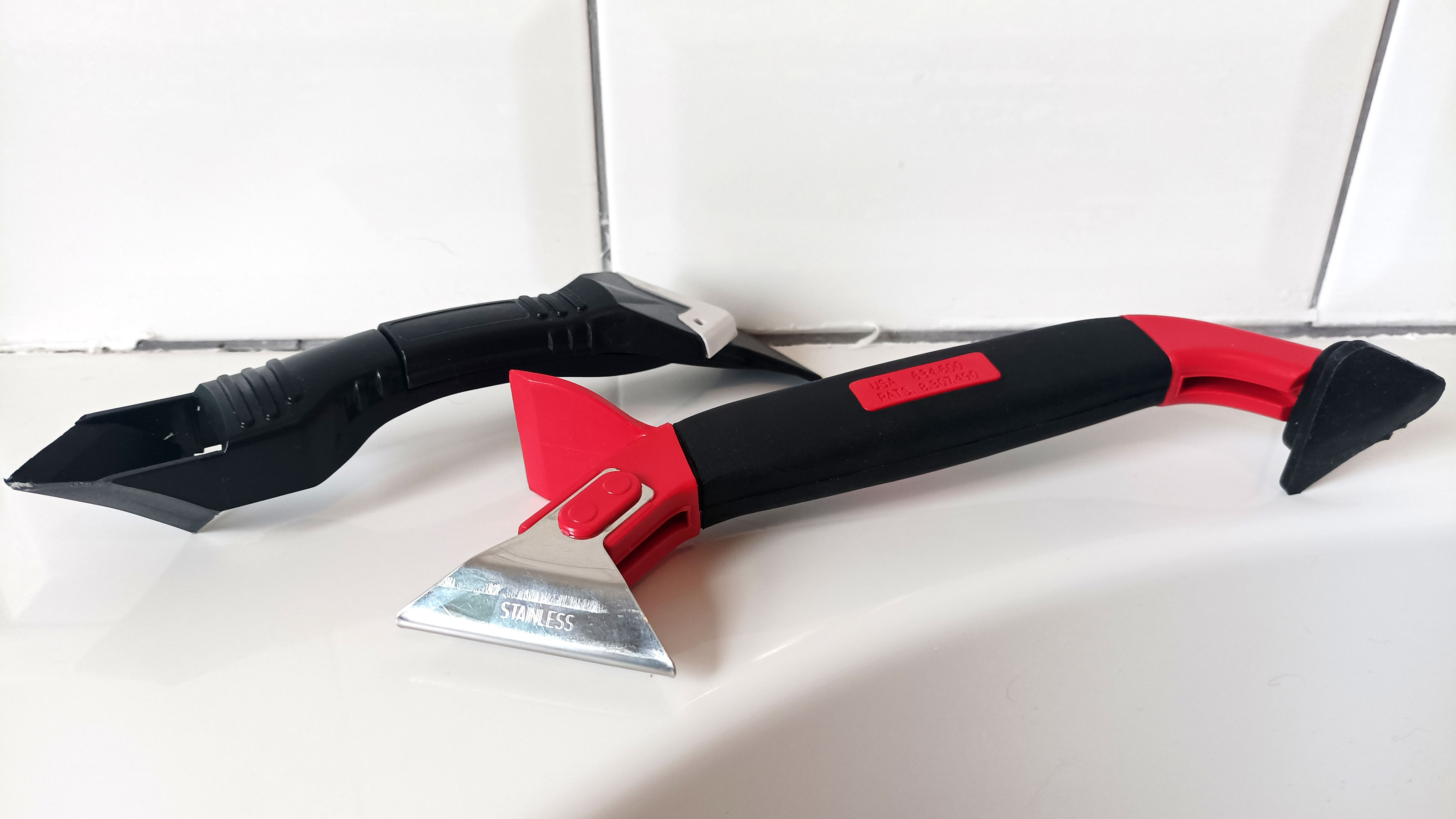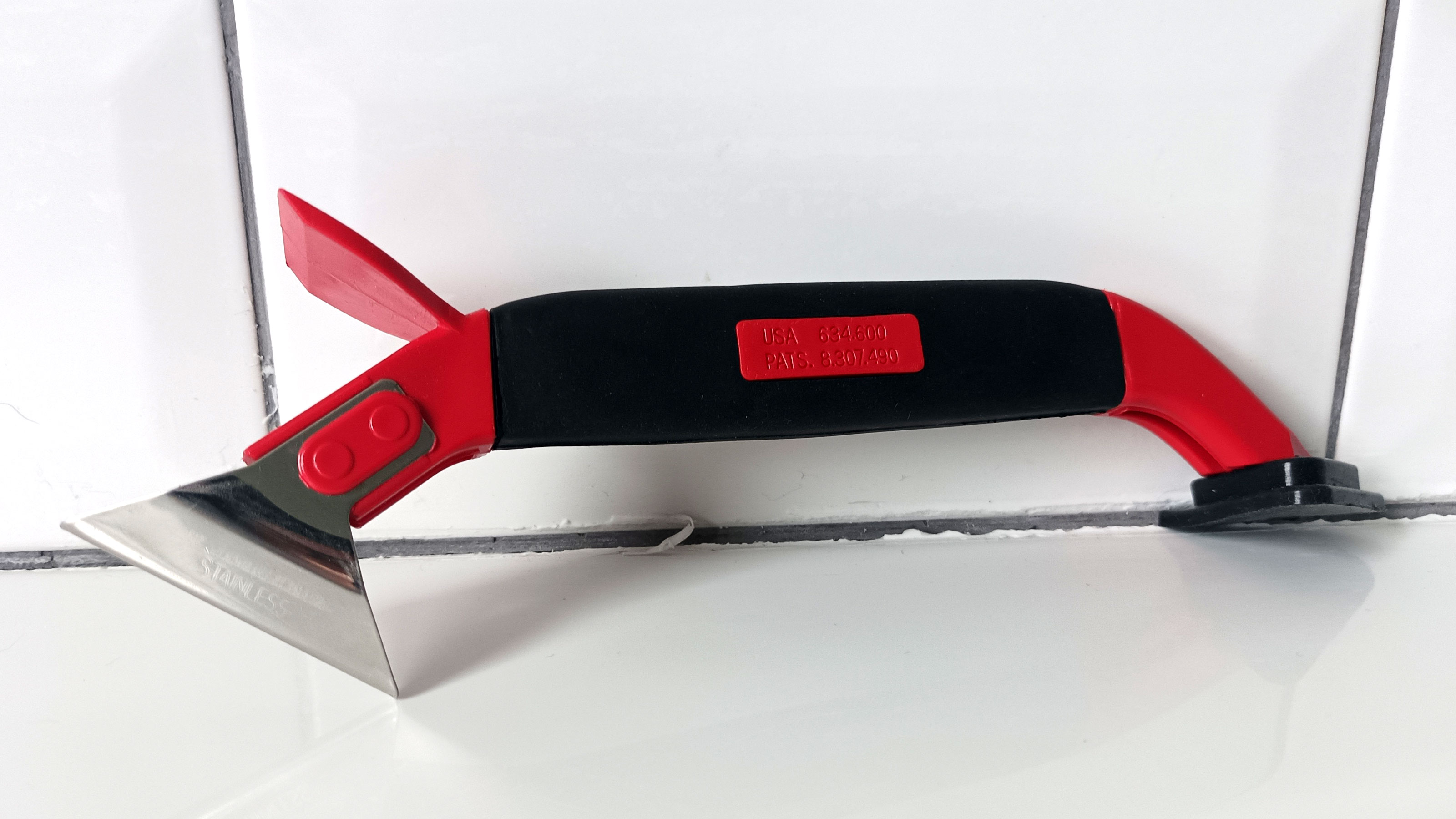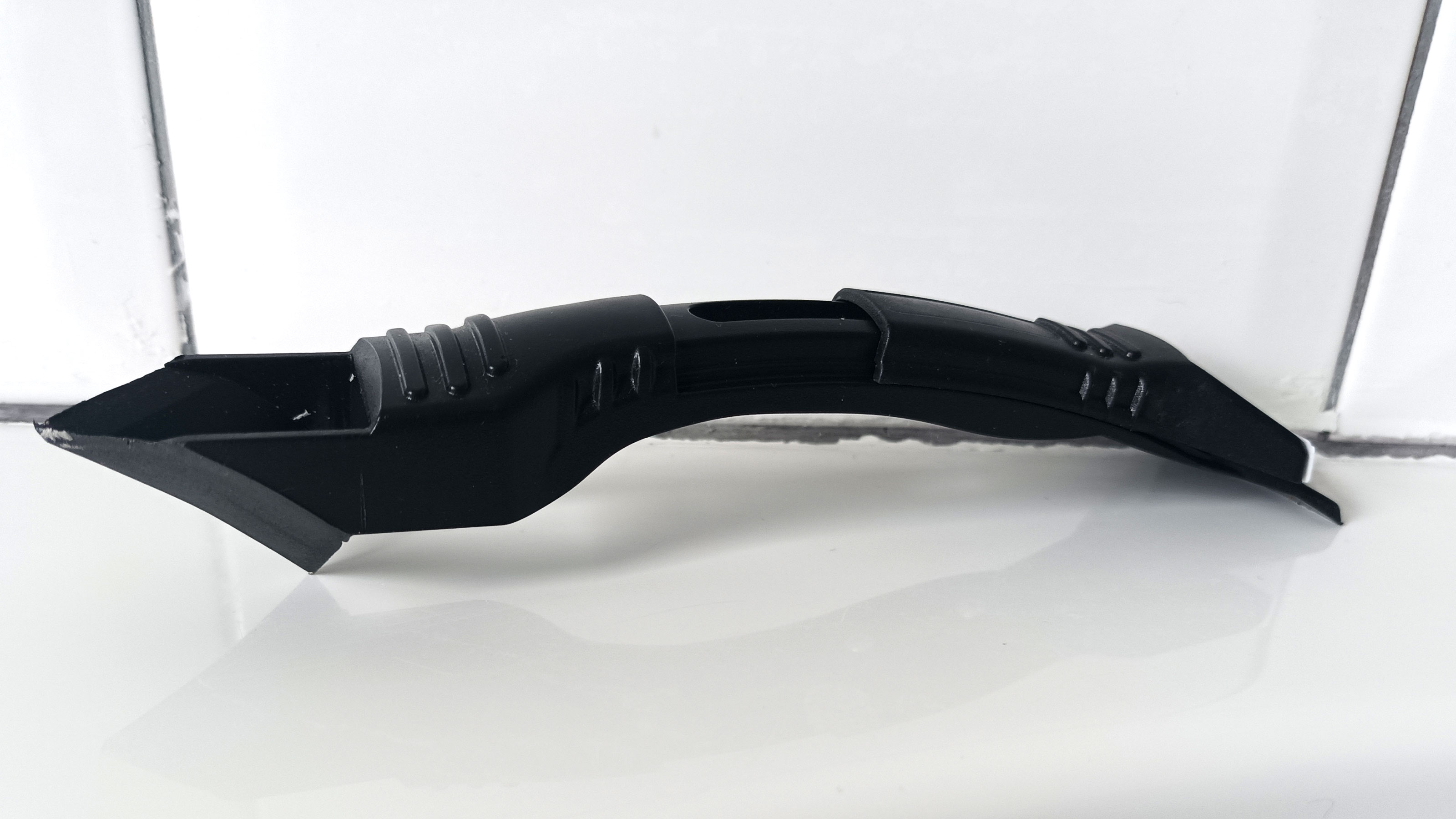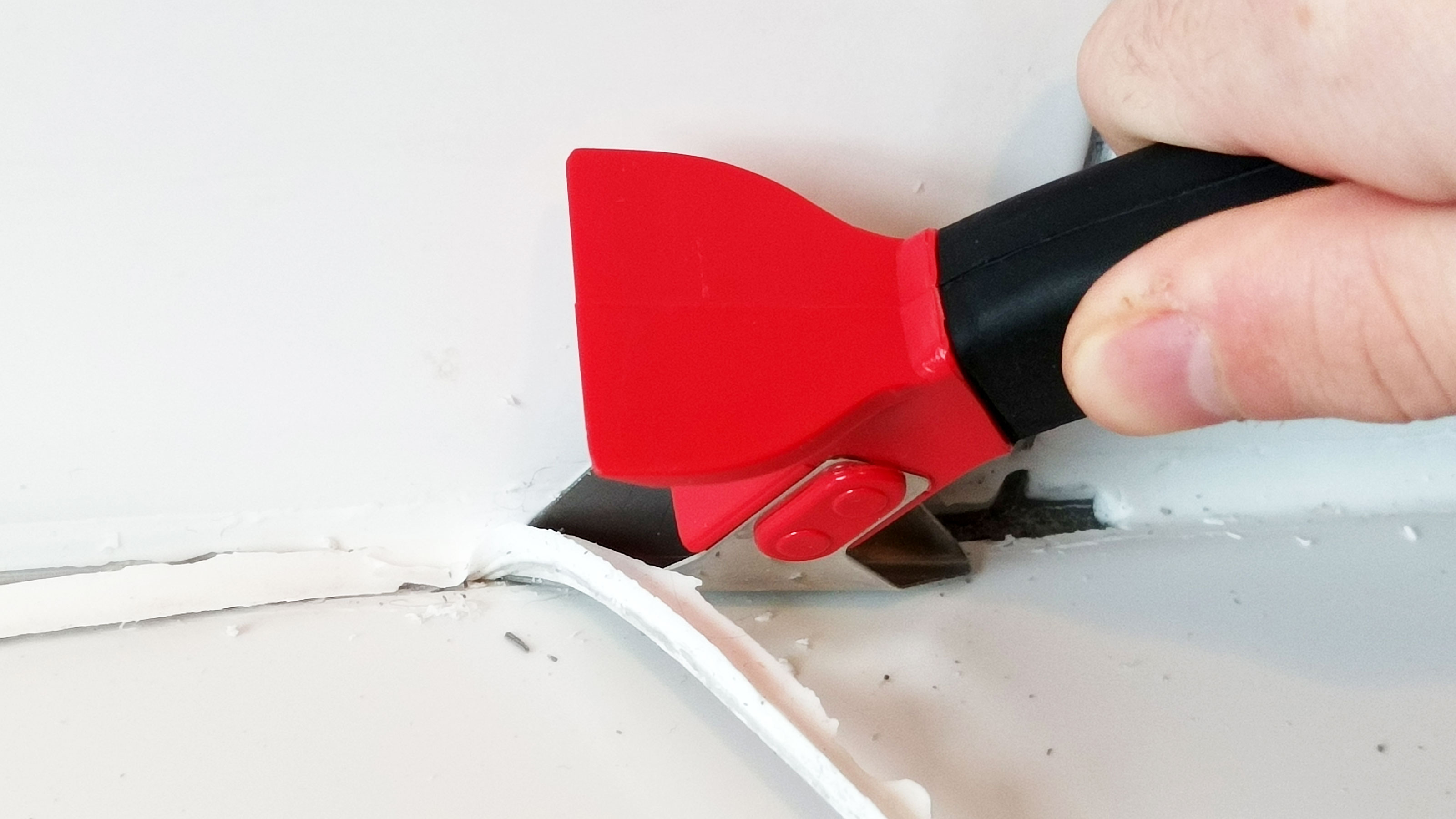Do silicone removal tools really work? We put them to the test and here's our verdict
Removing silicone and caulk isn’t the easiest of DIY jobs — here we put two removal tools to the test to see how well they work and whether they are worth it

Could specialist silicone removal tools make your DIY life easier? No one wants ugly, old, mouldy sealant, or old sealant that is breaking down and lifting off the surface. So removing silicone or caulk and replacing with new is the simple solution. However it's not always a quick or easy job; sealant can be stubborn. Step in specialist removal tool.
A sharp knife is one solution, but silicone removal tools bring more to the table and they are more than just removal tools. They get rid of sealant but can also help shape the new silicone or caulk applied. So when the sealant or caulk is gone you simply need to go about sealing or caulking the freshly cleaned areas for a smart, smooth finish.
Here we give two silicone/caulk removal tools a rigorous run through to see just how good they are — and deliver our verdict on whether they're worth the money.
What are silicone removal tools?
The best bathroom sealants and painters/decorators caulk are designed to stick to the surface you apply them to and create a strong watertight bond. Which conversely can make them difficult to remove.
Silicone and caulk removal tools are specially designed to fit into the areas where sealant is found. They are shaped to work under the sealant and lift it away. Unlike a sharp knife they tackle both sides at the same time for a more efficient and speedier job.
The silicone and caulk removal tools we tried and tested
Amazon Basics 3-in-1 caulk removal tool
We wanted to keep it simple and specific, so decided on an Amazon Basics 3-in-1 caulk removal tool. Mainly because it had a stainless steel removal head, but also because it had a simple sealant shaping tool included. Meaning that it covered all the basics.

Sealant Finishing Tool Kit
For more than the basics we decided to get a generic sealant finishing tool kit that included a silicone/caulk removal tool and a set of finishing tools and a few useful extras i.e. caulk cartridge nozzles with cover. The removal tool had a plastic head so we wanted to see how that worked.

How did the two silicone removal tools compare?
Here we take a quick look at some of the key features of both tools and compare them against each other
Grip
You need a good grip on removal tools to help lift the sealant away from the surface. The 3-1 was definitely more sturdy and larger making it easier to grip. A rubber sleeve also helps with the handling. The generic removal tool is not as sturdy and the plastic finish does offer as much grip but it does have ridges to improve the grip when using.
Ease of removal
The stainless steel head of the Amazon Basic tools is great at removing sealant, especially when dragging the tool towards you. It struggles a little when pushing forward but a bit of elbow grease ensures it gets the job done.
The generic plastic tool works well when pushing forward, but isn’t as effective as the stainless steel head. When dragging back it needed a lot of effort to even catch the sealant and simply didn’t do enough.
Durability
The build of the Amazon Basics tool is much stronger than the generic plastic removal tool. It is built to last. The head is securely fastened to the handle, but the sealant shaper needs to be removed each time a different size is needed. It is made from a soft flexible rubber that eventually gets mis-shapen.
The generic removal tool has a selection of five different heads which are easy to swap and keep their shape. But its sliding handle, while useful, doesn’t have the feel of a tool that will last with heavy duty use.
Features
The kit wins hands down as it has all the extras that will help ensure your sealant is easy to remove and will look good. The removal tool has a few features that of note included the extending handle. This allows you to move the sealant shaper into position or pull back to use the integrated scraper.
The Amazon Basics tool is very much that, basic. A three way sealant shaper, a scraper and the removal head. If you want more then you are out of luck.
Price
Prices are similar, especially when considering what you get. The kit cost around 20-30% more, as you would expect. When considering the two tools the price will be one of the least important considerations.
Are they worth the money? Our verdict is…
Should you get a silicone/caulk removal tool? Definitely. They are a great addition when removing silicone or caulk and should be in any DIYers tool kit and they only cost around the same price as a London pint — or for non drinkers, two coffees.
If you are just looking for a basic caulk removal tool then the Amazon Basics is the one you need. Its stainless steel head is more durable and gives a crisp clean cut when removing silicone.
The generic plastic tool is not as effective, but it is good for going back over remaining sealant and is less prone to scratching. But you only need to go over the silicone once with Basics and then you can call the scraper into action.
The scraper on both isn’t brilliant, they are adequate rather than outstanding. Personally, we would invest is a window scraper for the fine leftover caulk.
Our advice is to buy the Amazon Basics removal and purchase the extras in the kit separately. This will be a little more expensive, but you get the tools you want and a guaranteed decent removal tool.

Get the Homebuilding & Renovating Newsletter
Bring your dream home to life with expert advice, how to guides and design inspiration. Sign up for our newsletter and get two free tickets to a Homebuilding & Renovating Show near you.
Steve Jenkins is a freelance content creator with over two decades of experience working in digital and print and was previously the DIY content editor for Homebuilding & Renovating.
He is a keen DIYer with over 20 years of experience in transforming and renovating the many homes he has lived in. He specialises in painting and decorating, but has a wide range of skills gleaned from working in the building trade for around 10 years and spending time at night school learning how to plaster and plumb.
He has fitted kitchens, tiled bathrooms and kitchens, laid many floors, built partition walls, plastered walls, plumbed in bathrooms, worked on loft conversions and much more. And when he's not sure how to tackle a DIY project he has a wide network of friends – including plumbers, gas engineers, tilers, carpenters, painters and decorators, electricians and builders – in the trade to call upon.

